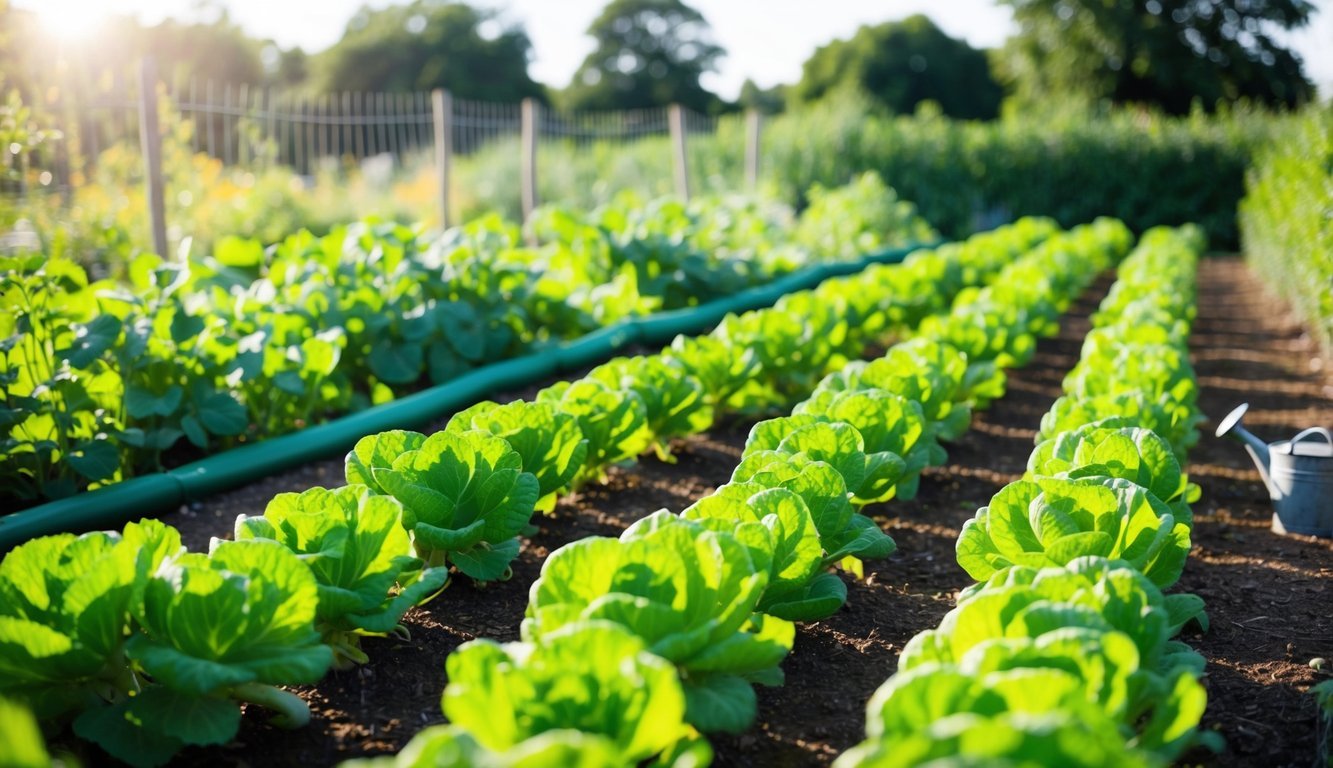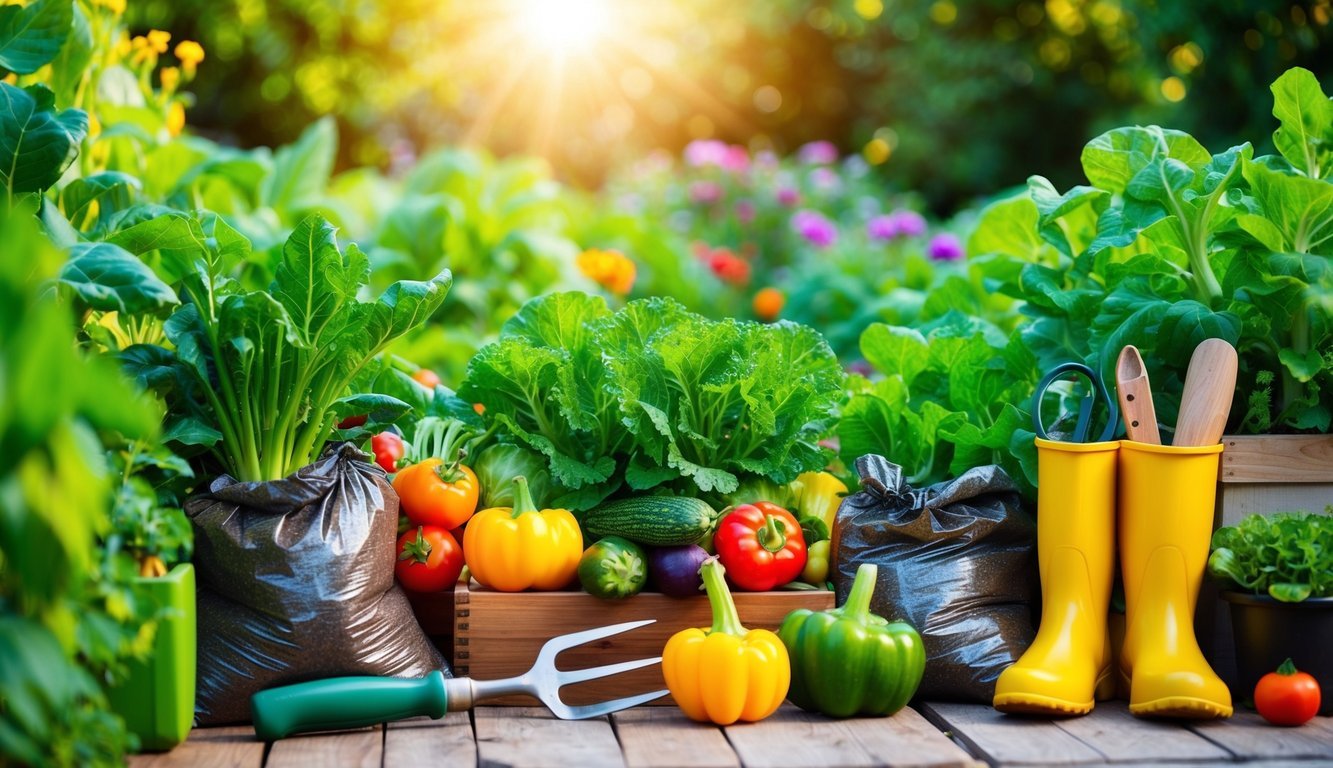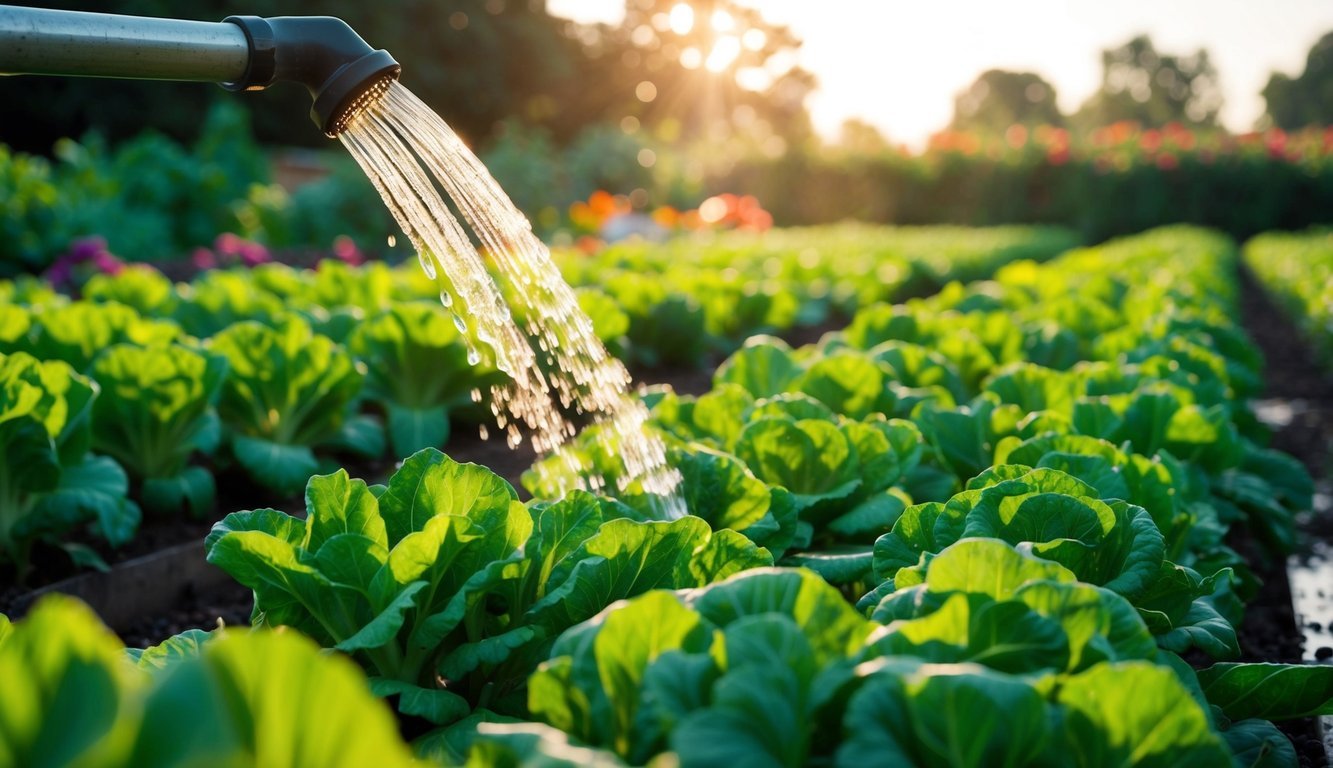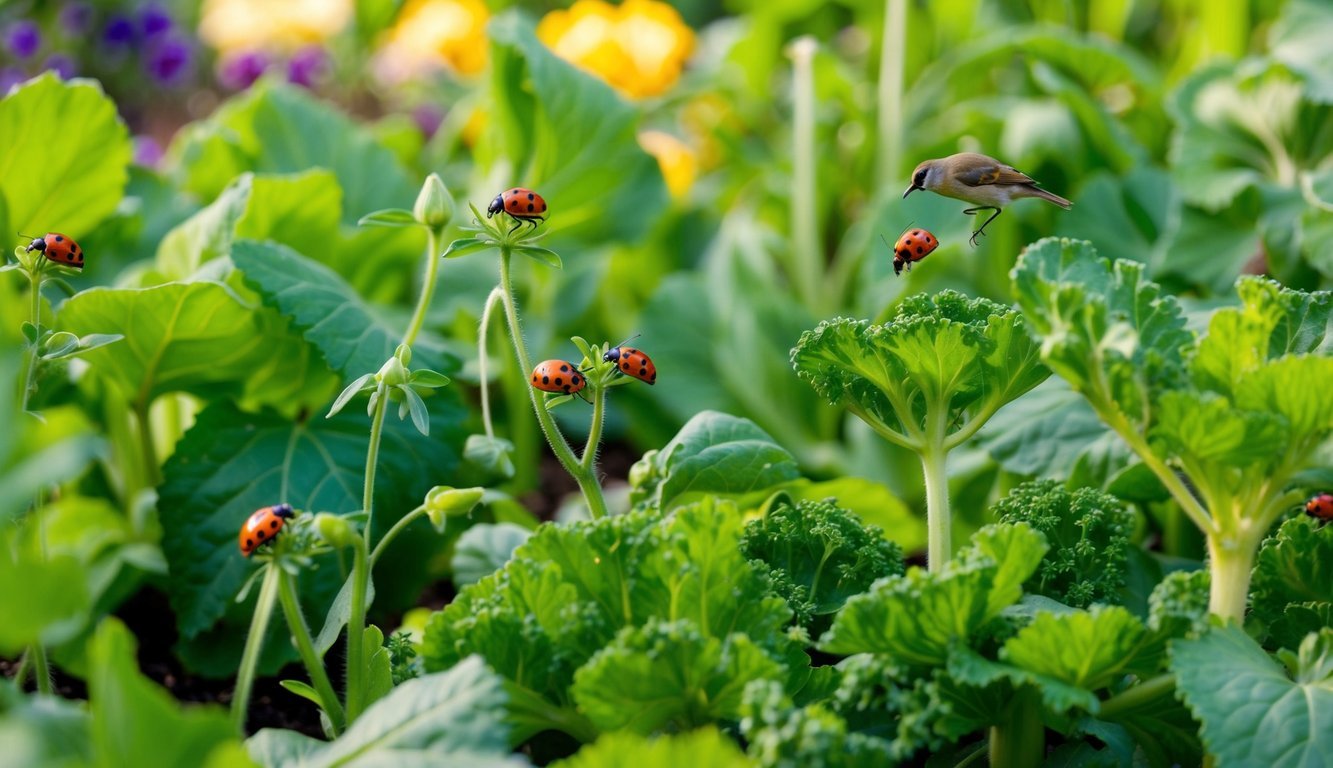Growing your own organic vegetables can be a rewarding way to provide healthy food for your family.
I love the idea of walking into my backyard to pick fresh produce, knowing exactly where it came from and how I grew it. Below are simple tips and strategies that can help anyone start a successful organic garden.

With the right approach, you can cultivate a variety of veggies that not only taste great but are also free from harmful chemicals.
I’ve discovered that focusing on a few key practices makes a huge difference in the health of the plants and the quality of the harvest.
Let’s dive into some practical tips that can help you grow your own nutritious organic vegetables.
1) Start with Rich Compost

I believe that starting with rich compost is essential for growing healthy, organic veggies.
Compost adds vital nutrients to the soil, improving its structure and moisture retention.
When I create my compost, I include a mix of kitchen scraps, grass clippings, and leaves.
This combination breaks down over time, providing a balanced feed for my plants.
Maintaining the right moisture level in the compost is key, so I check it often.
I make sure it feels like a wrung-out sponge—moist but not soggy.
Turning the compost regularly helps aerate it and speeds up the decomposition process.
I try to keep the temperature between 135°F and 160°F for optimal microbial activity.
Using compost not only enriches my soil but also reduces waste.
It feels good to recycle kitchen scraps while nurturing my garden.
For the best results, I apply a generous layer of compost before planting.
This gives my seedlings a strong start, paving the way for a bountiful harvest.
Use Heirloom Seeds
When I think about gardening, using heirloom seeds is one of my favorite tips.
Heirlooms are special because they’ve been passed down through generations.
They often have unique flavors and vibrant colors that make my garden stand out.
I love selecting seeds from healthy, productive plants.
The taste is often richer compared to modern hybrids.
Plus, saving seeds from my best plants gives me a sense of connection to the garden.
Storing heirloom seeds is easy too.
I just keep them in a cool, dry place, like my fridge, to maintain their viability.
This way, I can enjoy my favorite varieties year after year.
If you’re looking for something more than just standard veggies, heirloom seeds can definitely elevate your garden.
They come in various shapes, colors, and flavors that add character to meals.
So why not give them a try? They might surprise you!
3) Plant Companion Crops
I’ve found that companion planting can make a big difference in my garden.
By choosing the right pairings, I encourage healthy growth and natural pest control.
For example, the Three Sisters—corn, beans, and squash—work well together.
The corn provides support for climbing beans, while the beans enhance soil nutrients.
I also like to mix herbs with my vegetables.
Herbs can repel pests and attract beneficial insects, which helps create a balanced ecosystem.
When planning my garden layout, I consider which plants will benefit each other.
Some plants can provide shade while others thrive in sunlight.
This thoughtful arrangement leads to a more productive garden.
4) Practice Crop Rotation
Crop rotation is a simple yet effective way to keep my garden healthy.
I avoid planting the same type of vegetable in the same spot year after year.
This practice helps prevent pests and diseases from taking hold in the soil.
I like to follow a basic rotation method, which involves grouping crops by their plant families.
For example, I might grow legumes one year, followed by leafy greens, root vegetables, and then fruiting plants.
This approach keeps my soil balanced and productive.
By rotating my crops, I ensure that different nutrients are used at various times.
Each plant type can help restore soil health in its way.
It’s a win-win!
Practicing crop rotation not only enhances my garden’s yield but also makes it easier for me to manage pests.
I find that the more I rotate, the healthier and more resilient my plants become.
It’s worth giving it a try!
5) Water Deeply in Mornings

I’ve found that watering my vegetable garden in the morning works wonders.
The early hours provide a cool, calm environment that helps the plants absorb moisture without too much evaporation.
When I water deeply, I ensure that the moisture seeps down to the roots.
I like using a soaker hose or a watering wand to target the soil directly.
This way, I can avoid splashing water on the leaves, which can sometimes lead to disease.
Watering in the morning also gives the plants time to dry off as the sun rises.
This reduces the risk of mildew and other fungal issues that thrive in damp conditions.
Plus, it allows me to check on my plants and spot any issues early in the day.
Maintaining a consistent watering schedule helps my veggies establish strong roots.
I aim for the soil to be moist but not soaked.
Finding that balance takes a little practice, but it’s worth it for a healthy garden.
6) Mulch to Retain Moisture
I always make sure to use mulch in my vegetable garden.
It’s a simple way to help retain moisture in the soil.
Organic mulches, like straw or wood chips, create a protective layer that reduces evaporation.
This means less frequent watering for my plants, especially during the hot summer months.
I’ve found that a thick layer of mulch not only keeps the soil moist but also helps suppress weeds.
This means I can spend more time enjoying my garden and less time weeding.
Compost is another great option.
It not only retains moisture but also adds nutrients as it breaks down.
Plus, it’s often easy to source or make at home.
When I layer mulch properly, it shades the soil and keeps temperatures stable.
Plants thrive when their roots are cool and consistent, leading to healthier veggies.
Using mulch has made a noticeable difference in my garden’s productivity.
It’s a small step that brings big benefits!
Incorporate Natural Pest Control

I’ve found that using natural pest control is a game changer for my garden.
It keeps my veggies healthy without the harsh chemicals.
One effective method is planting companion plants.
Flowers like marigolds attract beneficial insects that prey on pests.
I also incorporate umbelliferous flowers, which help create a balanced ecosystem.
Another tactic I use is neem oil.
It acts as a natural pesticide and is safe for my plants when diluted properly.
Insecticidal soap is also a great option for dealing with aphids and other small pests.
I’ve noticed that keeping my garden well-aerated can prevent pest infestations.
Regularly using a garden fork to aerate the soil makes a big difference.
Plus, covering bare soil with mulch helps discourage weeds and pest growth.
With these simple natural strategies, I can protect my garden and enjoy healthy, organic crops.
Understanding Organic Gardening

Organic gardening is all about growing plants naturally, without synthetic chemicals.
It focuses on soil health and the natural ecosystem, allowing my veggies to thrive while being good for the environment.
Here’s what I’ve learned about its benefits and soil preparation.
The Benefits of Going Organic
Choosing organic gardening has numerous advantages.
Here are some key benefits I’ve discovered:
-
Healthier Produce: Organic veggies often contain higher levels of beneficial nutrients. Without artificial pesticides or fertilizers, I can enjoy food that’s closer to its natural state.
-
Environmental Impact: Organic practices help maintain biodiversity. By avoiding chemicals, I’m fostering a healthier ecosystem in my garden.
-
Pest Control: I can manage pests naturally with methods like companion planting or homemade sprays. For example, garlic spray can deter many insects, making my garden less reliant on store-bought solutions.
-
Sustainability: Organic gardening promotes practices that improve soil and water quality. It supports long-term agricultural sustainability, which feels good for my conscience.
Organic Soil Preparation Basics
Preparing my soil for organic gardening is essential for a successful yield.
Here’s what I focus on:
-
Test Soil Health: First, I always check my soil’s pH and nutrient levels. This helps me understand its needs and what amendments are necessary.
-
Add Organic Matter: I improve my soil by adding compost or well-rotted manure. This builds structure, enhances moisture retention, and provides nutrients.
-
Mulching: Applying mulch is crucial. It not only reduces weeds but also conserves moisture, keeping my soil temperature stable.
-
Avoid Chemicals: For organic preparation, I steer clear of synthetic fertilizers. Instead, I rely on natural amendments such as bone meal or fish emulsion to nourish my plants.
These steps help create a thriving environment for my vegetables, ensuring they grow strong and healthy right from the start.
Creating a Family-Friendly Garden

A family-friendly garden is a great way to bond while teaching kids about nature and healthy eating.
By choosing the right plants and actively involving kids in the gardening process, we can create a fun and engaging environment.
Choosing Kid-Safe Plants
When selecting plants for a family garden, safety is my priority.
I prefer flowers and vegetables that are non-toxic and edible.
Some great options include:
- Sunflowers: Bright and cheerful, they attract pollinators.
- Snap Peas: Sweet and crunchy, perfect for snacking.
- Carrots: Fun to grow and tasty to eat right from the garden.
- Zucchini: Productive and versatile in the kitchen.
I also ensure to check for any potential allergies.
Avoid any harmful plants like certain ornamental varieties or those with toxic berries.
Making a list of safe plants not only keeps my kids safe but also lets us explore different textures and colors in our garden.
Involving Kids in Gardening
Getting kids involved in the gardening process makes it enjoyable and educational.
I set aside dedicated times for garden activities, like Saturday mornings, to establish a routine.
Kids can take on specific tasks like:
- Planting Seeds: They love digging holes and placing seeds in the soil.
- Watering: Using a small watering can helps develop their responsibility.
- Weeding: Teaching them to identify weeds fosters observation skills.
Encouraging creativity by letting them decorate plant markers or create garden art can enhance their interest.
Each activity turns into a learning opportunity about nature, responsibility, and the food cycle.
It’s rewarding to see them engage with the environment and understand where their food comes from.

